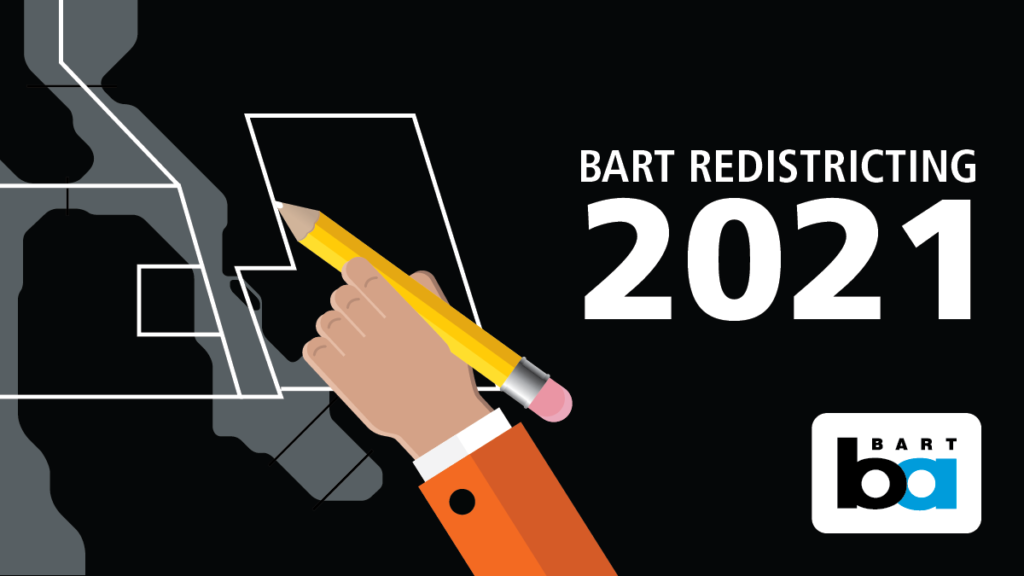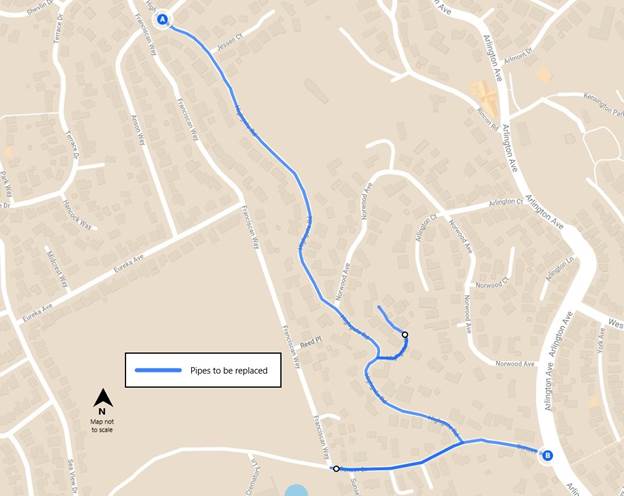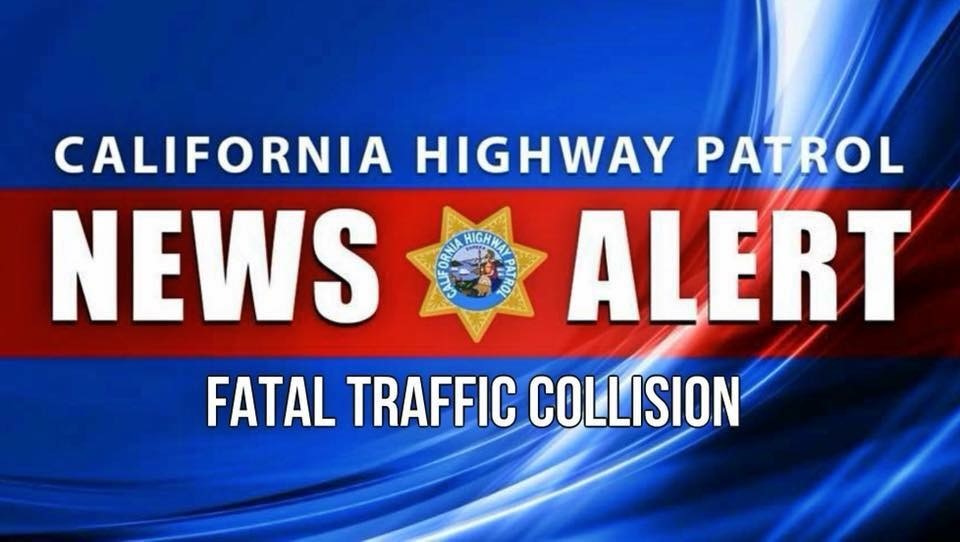
New Contra Costa County Administration Building which was completed last year and dedicated in December. Source: KMD Architects
Blame placed on unvaccinated including children ages 5-11
“We need 92,000 more people to get vaccinated,” Contra Costa Health Services Director Anna Roth
Next redistricting hearing Nov. 9
By Daniel Borsuk
The Contra Costa County Board of Supervisors will not meet in their gleaming new state-of-the-art hearing room for the first time in the new $95 million Contra Costa County Administration Building until January, if then.
It all depends on how the county’s fight against COVID-19 goes. At least for now, Contra Costans will have to continue to remotely view and participate in supervisors’ meetings.
While the new three-story Contra Costa County Administration building at 1025 Escobar St. in Martinez is open for administrative services, the public hearing room goes unused by the public.
Only county administrative and county counsel use the hearing room during board of supervisors’ meetings.
On a 4-0 vote, supervisors approved, during their meeting on Tuesday, Nov. 2, its second consecutive order recommended from County Counsel Mary Ann Mason to extend for at least through December, the teleconference public meeting order that applies to all county governmental entities.
The edict also applies to the board of supervisors’ advisory commissions. Meetings conducted for the planning commission, airports commission, library commission, merit board, and Proposition X advisory commission among other advisory panels must continue to be conducted via Zoom or other teleconference media.
The supervisors’ action to extend the COVID-19 public meeting teleconference order arose from the fact that 92,000 five- to 11-year-old children in the county are now eligible to get vaccinated, Contra Costa Health Services Director Anna Roth announced.
This announcement will add more burden to county health officials to vaccinate residents. She informed supervisors the county’s total vaccination rate is 73.2 percent.
“We need 92,000 more people to get vaccinated,” Roth informed supervisors.
Mason recommended supervisors adopt the resolution because “the COVID-19 case rate in Contra Costa County is in the ‘substantial’ community transmission tier, the second-highest tier of the CDC’s four community transmission tiers and the County Health Officer’s recommendations for safely holding public meetings, which recommend virtual meetings and other measures to promote social distancing, are still in effect.”
In October, supervisors had adopted a similar resolution authored by County Counsel Mason to continue teleconference meetings for public health reasons at least until November, but obviously the public health landscape had not improved sufficiently for state health officials to lift all the burdensome public meeting restrictions.
While county health officials reported the county is making progress in getting Contra Costa residents vaccinated, “A Statewide state of emergency and the Countywide local emergency continue to directly impact the ability of the Board of Supervisors, in all of its capacities, and its subcommittees and advisory bodies.”
Another COVID-19 oriented state of emergency edict ordering Contra Costa County governmental agencies to conduct meetings remotely means the board of supervisors won’t conduct its inaugural meeting until January, if then, in the new $95 million administration building in downtown Martinez.
In the meantime, the gleaming new public hearing hall remains closed to the public.
Redistricting Public Hearing on Nov. 9
The county’s fourth public hearing on supervisorial redistricting will be held starting at 9 a.m. on Tuesday, Nov. 9. The hearing will start at 9 a.m. during the Board of Supervisors meeting. The hearing will be held via Zoom and can be viewed online. (See related article)
“The County Board of Supervisors welcomes your community input in this important, decennial process,” said Board Chair Dianne Burgis of Brentwood. “We are committed to a robust Redistricting and public outreach process with public hearings, a dedicated website at CoCoRedistricting.org. public workshops, and multiple ways to share your input.”
Redistricting is based on the U.S. Census data, which was released in legacy format on August 12, 2021. The actual drawing of Supervisorial District Maps requires the official California State Adjusted Redistricting data, which was released Sept. 20, 2021 and includes updated data to ensure that individuals in the prison population are counted by each jurisdiction.
Acknowledge Black Maternal and Infant Health Day
Supervisors proclaimed Nov. 3, 2021 as Black Family Health Day to acknowledge the disparities in adverse birth outcomes among Black birthing patients and ways to turnaround those negative outcomes using pioneering technologies such as the early warning system, Partners in Pregnancy Fatherhood Program, Black Infant Health Program, and other programs.
From 2018 to 2020, 9.5 percent of Black mothers had preterm births compared to 5.8 percent of White mothers. Black babies are twice as likely to die within the first year of life as White babies (6.3/1,000 v. 3.2/1,000 from 2016 to 2020) and Black mothers experienced health-impacting, life-threatening events during childbirth at more than double the rate of White mothers from 2016 to 2018.
Read MoreLearn from other projects
Haga clic aquí para ver este aviso en español.
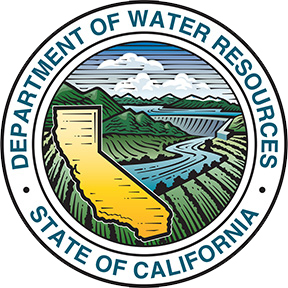 As part of ongoing development of the Community Benefits Program for the proposed Delta Conveyance (tunnel) Project, the Department of Water Resources (DWR) is holding a virtual workshop on Wednesday, November 17th from 6:00pm – 8:00pm to hear and learn from representatives of several different example community benefits programs around the country. (See related articles here and here)
As part of ongoing development of the Community Benefits Program for the proposed Delta Conveyance (tunnel) Project, the Department of Water Resources (DWR) is holding a virtual workshop on Wednesday, November 17th from 6:00pm – 8:00pm to hear and learn from representatives of several different example community benefits programs around the country. (See related articles here and here)
Members of the local Delta community are encouraged to attend this event and hear firsthand experiences about the development and implementation of these programs, including different organizational structures, development timing, important milestones and lessons learned.
There will also be an opportunity to ask the panelists questions and engage in dialogue about their experiences and insights. Although these types of programs are not uncommon, there are various ways to go about setting them up. This workshop gives both DWR and the local community the chance to learn more about how it could be done for the proposed Delta Conveyance Project. (See details of the proposed system, here)
The workshop panelists represent a diverse set of projects and community benefits programs from different parts of the country:
- Oakland, California, Partnership for Working Families
- Ben Beach, Legal Director
- North Charleston, South Carolina, LowCountry Alliance for Model Communities Port Authority Redevelopment and Transfer Station
- Omar Muhammed, Executive Director, LowCountry Alliance for Model Communities
- Morro Bay, California, Castle Offshore Wind Project
- Scott Collins, City Manager, City of Morro Bay
While no other project or community benefits program exactly matches the specifics of the proposed Delta Conveyance Project and what might be most appropriate for the Community Benefits Program for this project, the example projects that will be discussed in this workshop offer different and valuable perspectives and examples with varying structures, locations and challenges. In preparing for this workshop, DWR researched community benefits programs for large infrastructure projects that had long-term construction impacts, where the benefits of the project were not local, but impacts of the project were, and where location and potential for environmental justice and economically disadvantaged community concerns were also involved.
Workshop Details & Registration
- Wednesday, November 17, 2021 | 6:00pm – 8:00pm | REGISTER HERE
- Workshop will be conducted on Zoom with a call-in option available
Agenda
- Welcome and Introductions
- Presentations from the three project representatives
- Focused panelist discussion:
- How did the idea develop in your project?
- How did the community come together to provide input?
- When in the project lifecycle did people come together?
- How did you solicit priorities?
- How did you formalize the program?
- How are community benefit funds distributed?
- How are you measuring and monitoring community benefits?
- Public questions/discussion
Participation Accommodations & Additional Information
- Closed captioning will be provided
- Workshop materials will be available in English and Spanish, and a simultaneous Spanish translation will be offered
- Workshop access information and materials will be sent out prior to the workshop through Eventbrite
- If you cannot participate in the workshop but have questions, please email us at DeltaConveyanceCBP@water.ca.gov
- A recording of the workshop will be posted on the project website, along with the background material, when available
To register, click here.
Read MorePublic involvement is encouraged. Districts 1, 2, 3 and 7 currently include portions of Contra Costa County
The BART Board of Directors’ Redistricting Committee is scheduled to hold its first meeting since receiving the 2020 Census data to begin the process of redrawing election districts to align with current population information. The virtual meeting will be held Wednesday, November 10, 2021 from 1 to 3pm.
The BART Redistricting Committee consists of Directors Lateefah Simon (Chairperson), Elizabeth Ames and Mark Foley.
BART election districts are redrawn every 10 years following the U.S. Census. The primary purpose of redistricting is to ensure population equality among districts. This process is guided by traditional redistricting principles as well as the U.S. Constitution, the California Constitution, the federal Voting Rights Act and the BART District Act.
Information about current District boundaries
BART 2011 Election Districts Final Report – Adopted 12/1/2011 (10 Mb .pdf file)
All BART Districts
Counties Included: Alameda, Contra Costa, San Francisco
Map: All BART Districts (.pdf file)
District: 1
Counties Included: Contra Costa
Cities Included: Acalanes Ridge, Alamo, Alhambra Valley, Blackhawk, Camino Tassajara, Castle Hill, Clayton, Concord, Contra Costa Centre, Danville, Diablo, Lafayette, Martinez, Mountain View, Norris Canyon, North Gate, Pacheco, Pleasant Hill, Port Costa, Reliez Valley, San Miguel, San Ramon, Saranap, Shell Ridge, Vine Hill, Walnut Creek
Map: BART District 1 (.pdf file)
District: 2
Counties Included: Contra Costa
Cities Included: Antioch, Bay Point, Bethel Island, Brentwood, Byron, Clyde, Concord, Discovery Bay, Knightsen, Oakley, Pacheco, Pittsburg, Vine Hill
Map: BART District 2 (.pdf file)
District: 3
Counties Included: Alameda, Contra Costa
Cities Included: Albany, Ashland, Berkeley, Castro Valley, Cherryland, El Cerrito, Kensington, Lafayette, Moraga, Oakland, Orinda, Piedmont, San Lorenzo
Map: BART District 3 (.pdf file)
District: 4
Counties Included: Alameda
Cities Included: Alameda, Oakland, San Leandro
Map: BART District 4 (.pdf file)
District: 5
Counties Included: Alameda
Cities Included: Castro Valley, Cherryland, Dublin, Fairview, Hayward, Livermore, Pleasanton, Sunol
Map: BART District 5 (.pdf file)
District: 6
Counties Included: Alameda
Cities Included: Fremont, Hayward (partial), Newark, Sunol, Union City
Map: BART District 6 (.pdf file)
District: 7
Counties Included: Alameda, Contra Costa, San Francisco
Cities Included: Albany, Bayview, Berkeley, Crockett, East Richmond Heights, El Cerrito, El Sobrante, Emeryville, Hercules, Kensington, Montalvin Manor, North Richmond, Oakland, Pinole, Richmond, Rodeo, Rollingwood, San Francisco, San Pablo, Tara Hills
Map: BART District 7 (.pdf file)
District: 8
Cities Included: San Francisco
Counties Included: San Francisco
Map: BART District 8 (.pdf file)
District: 9
Cities Included: San Francisco
Counties Included: San Francisco
Map: BART District 9 (.pdf file)
Read More

Victims of cyberbullying can feel helpless and may not know what to do. Free resources on jw.org help children, teens and parents successfully deal with bullying.
Oakley parents share their approach
By Ezra Smith, Public Information Desk, Jehova’s Witnesses United States Branch
While remote learning during the COVID-19 pandemic lowered reported instances of bullying, parents fear that, for some students, going back to school will mean going back to being bullied.
“With the prevalence of technology and social media, you’re forced to be concerned. Now kids can be bullied in the privacy of their own home,” said Tomas, a father of three who lives in Oakley.
Now 15 years after the inception of National Bullying Prevention Month in October, technology’s ever-greater presence in children’s lives has given bullying a new outlet. With just a click, cyberbullies can taunt, harass and threaten relentlessly, even reaching into the home via cellphone or computer. As a result, victims report feeling hopeless, isolated and even suicidal.
What can parents do to protect their kids? Taking an interest in their children’s online world can make a difference, says the National Parent Teacher Association.
This interest does not necessarily require parents to become tech experts. Instead, the federal stopbullying.gov site advises parents to watch for subtle clues that something is wrong, such as their child becoming withdrawn, hiding their screen when others are nearby or reacting emotionally to what is happening on their device.
For Tomas and his wife Leticia, that means being keenly aware of what “normal” looks like for three teenagers, ages 13, 14 and 17. “I can see by their body language or their mood if they had a good time [at school] or not,” Leticia said.
“It’s so important that we take time with our children,” Tomas added. “If we don’t take time, we won’t be able to know our kids and we won’t be able to know how to help them if they are going through something like cyberbullying.”
Talking with kids openly — and often — helps too. “The more you talk to your children about bullying, the more comfortable they will be telling you if they see or experience it,” UNICEF says in its online tips for parents.
As their two daughters enter their teens, Houston parents Thiago and Auboni have found that talking less and listening more works best. “We try to focus on being approachable and listening actively without reaction,” Thiago said.
Beyond talking, listening and observing their kids, parents should not be afraid to make and enforce rules for online activities, experts say.
Thiago and Auboni’s girls are allowed to play online games, but they are expected to turn off the live chat feature to limit interactions with strangers. “We reassure the girls that we trust them and respect their privacy, but they have to stay within the boundaries we’ve set,” Auboni said.
Tomas and Leticia take a similar approach. While they use an app to monitor their kid’s screen time, they recognize that balance is important. “As my kids are getting older, you do have to respect their privacy,” Tomas said. “They are rewarded as they build that trust. That shows that they are responsible.”
Both families cited the tips and reminders they have considered together with their kids from free resources available on jw.org, the official website of Jehovah’s Witnesses.
One of Leticia and Tomas’ daughters especially recommends one of the site’s short animated videos, “Beat a Bully Without Using Your Fists”.
“If being bullied, we don’t want to fight fire with fire,” she said. “Instead of being angry and fighting back, we can just give a calm response and leave the issue instead of making it even worse.”
Victims of cyberbullying can feel helpless and may not know what to do. Free resources on jw.org help children, teens and parents successfully deal with bullying.
Read MoreBy Kelly Kalfsbeek, PIO, Contra Costa County Public Works Department
Contra Costa County will be issuing a Road Closure permit to East Bay Municipal Utility District (EBMUD) to fully close a portion of Sunset Drive, between Franciscan Way & Arlington Avenue and Highgate Road, between Sunset Drive & Edwin Drive, and Highgate Court in Kensington. Traffic will be detoured via neighboring streets.
The purpose of this road closure is for EBMUD to install approximately 5,165 feet of 6-inch and 8-inch Earthquake Resistant Ductile Iron (ERDIP) water main. Work will begin on Tuesday, November 9, 2021 and last through June 2022, barring unforeseen circumstances. Work will occur between 7:00 a.m. through 4:30 p.m., Monday through Friday, weather permitting. The roadway will be reopened at the end of each workday.
Residents can expect pavement saw cutting, trenching, staging of equipment and materials, temporary road closures to through traffic and loss of some street parking, in phases. Some dust and noise can also be expected during the hours of construction. A portion of Sunset Drive, Highgate Road, and Highgate Court will be closed to through traffic (allowing residential and emergency access only). There will be traffic control throughout the work area so drivers can expect delays. “No Parking” signs will be posted 72 hours in advance of work. Final paving will follow several months after pipeline installation.
About Contra Costa County Public Works Department:
Contra Costa County Public Works Department (CCCPWD) maintains over 660 miles of roads, 150 miles of streams, channels and other drainage and over 200 County buildings throughout Contra Costa County. CCCPWD provides services such as Parks and Recreation, Sand Bag Distribution and Flood Control throughout unincorporated areas of Contra Costa County. To learn more about CCCPWD, please visit www.cccpublicworks.org.
CONTACT: For questions, call Community Affairs at 510-287-7208 or email construction-north@ebmud.com; Outside of normal business hours, call 1-866-403-2683
Read MoreIn multiple languages
By Sharon Rummery, Public Affairs Officer, U.S. Citizenship and Immigration Services
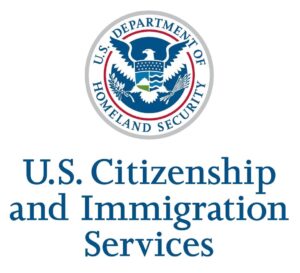 SAN FRANCISCO — Officers from U.S. Citizenship and Immigration Services will present six virtual information sessions from Nov. 3 to 30, including citizenship preparation sessions presented in Spanish and Thai. Those who need an accommodation should contact SFSJ.CommunityRelations@uscis.DHS.gov.
SAN FRANCISCO — Officers from U.S. Citizenship and Immigration Services will present six virtual information sessions from Nov. 3 to 30, including citizenship preparation sessions presented in Spanish and Thai. Those who need an accommodation should contact SFSJ.CommunityRelations@uscis.DHS.gov.
What & When
Immigration Overview
Wednesday, November 3, 4 to 4:30 p.m.
Webex Link: https://uscis.webex.com/uscis/j.php?MTID=m63b4d5bc6ab478be3c96c4840fc7e8c8
Meeting number (access code): 2761 682 5187
Meeting password: CIS1234!goCA
Naturalization Information – How to Become a U.S. Citizen
Thursday, November 4, 5 to 6:00 p.m.
Webex Link: https://uscis.webex.com/uscis/j.php?MTID=me33ac665f22d8fc68daff3b52ef1572d
Meeting number (access code): 2763 827 2230
Meeting password: 6mXFBvJBU$34
ข้อมูลการแปลงสัญชาติ วิธีการเป็ นพลเมืองสหรัฐฯ
K̄ĥxmūl kār pælngs̄ ạỵchāti wiṭhī kār pĕn phlmeụ̄ xng s̄h̄rạṭ̄h‡
Naturalization Information – How to Become a U.S. Citizen (Thai language)
Sunday, November 7, 1:30PM to 3:00PM (Presenter: Jeff Hilliard, San Diego)
Webex Link: https://uscis.webex.com/uscis/j.php?MTID=m5fac5fbf94519a1111b0311c2c61fd64
Meeting number (access code): 2764 254 4630
Meeting password: JJbCU4GDM95*
Naturalization Information – How to Become a U.S. Citizen
Tuesday, November 9, 7:30 to 8:30 p.m.
Webex Link: https://uscis.webex.com/uscis/j.php?MTID=m3a3a7bb871d91993144ca57cf0e1bc7b
Meeting number (access code): 2764 823 6756
Meeting password: Sfrsnjsacfre123!
Como Convertirse en Ciudadano Estadounidense (Spanish only)
Viernes, 19 de noviembre, 5 a 6 p.m.
Webex Link: https://uscis.webex.com/uscis/j.php?MTID=ma5817ca55e2061eec5bb69b3f0ecf03c
Meeting number (access code): 2762 810 5758
Meeting password: 5iGixJbmN4$4
Options for Victims of Crimes
Tuesday, November 30, 3 to 4 p.m.
Webex Link: https://uscis.webex.com/uscis/j.php?MTID=m303d806b5b1626bc1e709aaba69159a0
Meeting number (access code): 2760 844 8368
Meeting password: CIS1234!goCA
How – Instructions for participating:
We encourage you to join 10 minutes early. Call in at 1-415-527-5035 and use the Meeting Number to join.
- If you are using a computer, use Google Chrome. Click on “Join from your browser” to join the meeting.
- If you are using a phone or tablet, it is best to download the Cisco WebEx Meeting App
(it is free).
- To request a disability accommodation, please contact us no less than 3 days prior to the event. USCIS strives to meet accommodation requests whenever possible.
www.uscis.gov USCIS Contact Center: 800-375-5283 (TTY 800-767-1833)
To find all USCIS webinars, go to https://www.uscis.gov/outreach/upcoming-local-engagements.
For more information on USCIS and its programs, please visit uscis.gov or follow us on Twitter, Instagram, YouTube, Facebook, and LinkedIn.
Read More
By CHP Contra Costa
This morning, Monday, November 1, 2021, at about 10:45 AM, Contra Costa CHP was advised of a solo vehicle collision on westbound Highway 4, east of McEwen Road between Martinez and Hercules. The vehicle (a white Ford Ranger) was traveling westbound and left the roadway, rolling down an embankment. The driver and only occupant of the vehicle was not seat belted and was ejected from the vehicle.
The driver was transported to Contra Costa Regional Medical Center where he ultimately succumbed to his injuries and was pronounced deceased.
This collision is still under investigation, if anyone witnessed it or the events leading up to it, please contact Contra Costa CHP in Martinez, (925) 646-4980.
Read More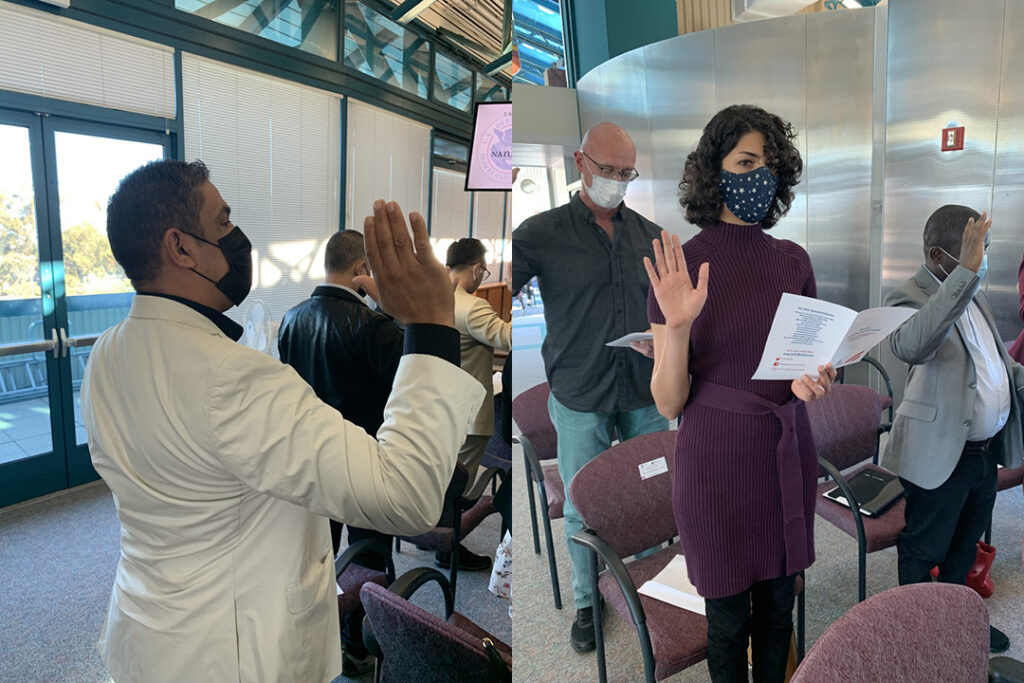
Antioch resident Sergio Roque Henriquez from El Salvador, Concord resident Roya Yousefelahiyeh from Iran, and Pittsburg resident Suku Varney from Liberia (right) take their oaths of citizenship on Thursday, Oct. 28, 2021. Photos by Sharon Rummery, Public Affairs Officer, U.S. Citizenship and Immigration Services
By Allen Payton
The U.S. Citizenship and Immigration Services (USCIS) San Francisco field office joined with the City of Pittsburg to present a special naturalization ceremony in the council chambers on Thursday, Oct. 28, 2021. At the event, 25 immigrants from 13 nations became U.S citizens. (See Zoom video – begins at 5-minute mark)

Pittsburg resident Suku Varney from Liberia, shows his U.S. citizenship document following the ceremony on Thursday, Oct. 28, 2021. Photo from his Facebook page.
Nine the new U.S. citizens were from the Philippines, three from Mexico, two each from India and the United Kingdom, and one each from El Salvador, Indonesia, Iran, Italy, Kazakhstan, Liberia, Mongolia, Nicaragua and Pakistan.
Four of the new citizens shared about themselves. Roya Yousefelahiyeh, of Concord, came here from Iran to study, and now works as a civil engineer in wastewater treatment.
Pittsburg resident Suku Varney from Liberia applied, as do millions of others, for the diversity visa. He was selected at random and got the golden opportunity to immigrate to the U.S. As a student at San Francisco State, he’s doing an internship in Superior Court, and hopes to go to law school.
Antioch resident Sergio Roque Henriquez came here from El Salvador at age 16, speaking no English.
“I had a goal, to go to school,” he said.
His cousins helped him get an exception and enter the local junior college’s English as a Second Language classes. Now, he’s married, dad of two, ages 16 and 11 and works as a chef.
Concord resident Liswana “Celilia” Judanu, formerly of Indonesia. She came here in 1978 to join her brothers after being rejected by the State Department for a visitor visa. Back home, Celilia had studied English, so she did well and wound up as a long-time employee of Wells Fargo, working now as a credit associate.
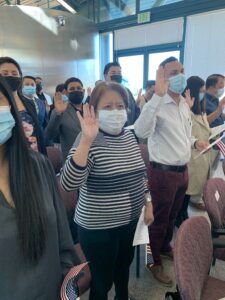
Concord resident Liswana “Celilia” Judanu, formerly of Indonesia takes her oath of citizenship on Thursday, Oct. 28, 2021. Photo by Sharon Rummery, USCIS
The keynote speaker was Pittsburg Mayor Merl Craft and opening remarks were presented by Councilwoman Shanelle Scales-Preston USCIS San Francisco District Chief of Staff Joseph Hamilton administered the Oath of Allegiance, and City of Pittsburg Assistant Director of Economic Development and Recreation Kolette Simonton sang the National Anthem.
“We are so proud to have hosted Pittsburg’s first-ever naturalization ceremony alongside USCIS,” said Melaine Venenciano of the Pittsburg Community Services Department.
“It was a wonderful event, and it went so smoothly,” said Joseph J. Hamilton, Chief of Staff, District 42, USCIS. “I have no doubt that our 25 newest citizens will forever have fond memories of their naturalization ceremony and the City of Pittsburg.”
USCIS naturalized approximately 625,000 people in fiscal year 2020. Many of them applied using USCIS online tools. More than seven million people have applied online for immigration benefits. To file online, individuals must first create a USCIS online account at USCIS naturalized approximately 625,000 people in fiscal year 2020. Many of them applied using USCIS online tools. More than seven million people have applied online for immigration benefits. To file online, individuals must first create a USCIS online account at https://myaccount.uscis.gov/.
USCIS encourages new U.S. citizens to share their naturalization photos on social media using the hashtag #NewUSCitizen.
Facts on Naturalization
Since our founding, the United States has welcomed immigrants from all over the world who have helped shape and define our country. During the last decade, U.S. Citizenship and Immigration Services welcomed more than 7.3 million new citizens into the fabric of our nation. Despite extended office closures and the impacts of the COVID-19 global pandemic, USCIS naturalized approximately 625,400 in fiscal year (FY) 2020.
Deciding to become a U.S. citizen is a personal decision and an important milestone in an immigrant’s life. Individuals who naturalize demonstrate a commitment to the principles that unify us as Americans and, in return, enjoy the rights and privileges that are fundamental to U.S. citizenship. We are committed to making the naturalization process more accessible to everyone who wants to start their citizenship journey.
About the Naturalization Process
People age 18 or older seeking to become U.S. citizens apply for naturalization by submitting Form N–400, Application for Naturalization. The N-400 application is available for online filing. An applicant must meet all the eligibility requirements in the Immigration and Nationality Act (INA) to naturalize.
These general eligibility requirements specify that the applicant must:
- Be at least 18 years of age when they submit the N-400 application;
- Be a lawful permanent resident (have a Green Card) for at least five years;
- Demonstrate continuous residence in the United States for at least five years immediately before applying for naturalization;
- Have been physically present in the United States for at least 30 months;
- Be a person of good moral character;
- Demonstrate an understanding of the English language including the ability to read, write, and speak basic English;
- Have knowledge of U.S. government and history (civics);
- Demonstrate attachment to the principles and ideals of the U.S. Constitution; and
- Be willing and able to take the Oath of Allegiance.
Special naturalization provisions modify these requirements for certain applicants or exempt them from one or more of these requirements. Among the applicants exempt from some of these requirements are spouses of U.S. citizens or members of the military.
- Individuals may apply for naturalization as the spouse of a U.S. citizen just three years after they receive a Green Card, instead of waiting five years. They must have been physically present in the United States for at least 18 months.
- Spouses of U.S. citizens stationed abroad may not have to meet any particular residence or physical presence requirements.
- Members of the military who served honorably during certain periods of conflict may be eligible for naturalization even if they do not have a Green Card and even if they are under the age of 18.
- Members of the military who served honorably for at least one year, at any time, and apply for naturalization within a certain time after their military service, are also exempt from the general residence and physical presence requirements.
Everyone filing an N-400 application who submits a complete application with all required documents will have an interview with a USCIS officer. Applicants we approve for naturalization are scheduled for a ceremony before a judge or with USCIS. They do not become U.S. citizens until they have taken the Oath of Allegiance.
Naturalization Statistics
- Since 2005, USCIS has welcomed approximately 730,000 citizens each year during naturalization ceremonies across the United States and around the world.
- In FY 2020, 70 percent of all naturalized citizens lived in 10 states: California, Florida, Texas, New York, New Jersey, Maryland, Massachusetts, Illinois, Georgia and Virginia.
- In FY 2020, the leading metropolitan areas of residence were New York-Newark-Jersey City, NY-NJ-PA (10 percent), Miami-Fort Lauderdale-West Palm Beach, FL (8 percent), and Los Angeles-Long Beach-Anaheim, CA (7 percent).
- In FY 2020, the top five countries of origin for naturalized citizens were: Mexico (82,700), India (47,900), Philippines (33,100), Cuba (31,000), and China (23,000). Since 2002, we have naturalized more than 139,000 members of the U.S. military, both at home and abroad. We have held naturalization ceremonies in more than 30 countries from Albania to the United Arab Emirates. In the last five years (FY 2016-20), we naturalized almost 30,000 service members. In FY 2020, we naturalized more than 4,500 service members, about the same number as the previous year.
- More than 40% of those we have naturalized since FY 2016 have been service members born in the Philippines, Mexico, China, South Korea and Jamaica—the top five countries of birth among citizens naturalized in that time span. Another 17% of military naturalizations from FY 2016-20 have been immigrants from the next five countries of birth: Nigeria, Nepal, India, Ghana and Kenya.
For more information on USCIS and its programs, please visit uscis.gov or follow us on Twitter, Instagram, YouTube, Facebook, and LinkedIn.
There are three U.S. immigration agencies within the Department of Homeland Security.
U.S. Citizenship and Immigration Services (USCIS), Immigration and Customs Enforcement (ICE) and Customs and Border Protection (CBP). Following are the responsibilities of each agency:
USCIS
- Adjudication of applications to gain immigrant status, based on family or work petitions, refugee or asylee status or through the Violence Against Women Act.
- Adjudication of naturalization applications
- Adjudication of asylum and refugee applications
- E-Verify employment verification
- Help with foreign adoptions
- Adjudication of work-related non-immigrant visas
- Adjudication of T and U visas (victim visas)
- E-Verify
ICE
- Homeland Security Investigations
- Preventing Terrorism
- Illegal Movement of People and Goods
- Immigration Enforcement
- Fugitive Operations
- Detention and Removal Management
CBP
- Inspections involving customs law
- Inspections involving immigration law
- Border Patrol
- USDA-APHIS agricultural quarantine inspections program
Sharon Rummery, Public Affairs Officer, U.S. Citizenship and Immigration Services contributed to this report.
Read MoreFollowing vehicle pursuit by Richmond police
By Jimmy Lee, Director of Public Affairs, Contra Costa County Office of the Sheriff
Contra Costa County Sheriff-Coroner David Livingston announces that a coroner’s jury today reached a finding in the July 23, 2020 death of 53-year-old Steven Kenneth Trottier of El Sobrante. The finding of the jury is that the death is a suicide.
The coroner’s jury reached the verdict in the inquest after hearing the testimony of witnesses called by hearing officer Matthew Guichard.
Following reports of a man with a gun, Richmond police responded and a vehicle pursuit of Trottier ensued. He stopped his car on Amend Road and died of a self-inflicted gunshot.
A July 23, 2020 post at 9:04 p.m. on the Richmond Police Department’s Twitter feed read, “Richmond police officers responded to the 5000 block of Amend Rd. following a report of a man with a gun. The incident has been resolved and there is no risk to the public. Please avoid the area while the investigation continues.”
A coroner’s inquest, which Sheriff-Coroner David Livingston convenes in fatal incidents involving law enforcement personnel, is a public hearing during which a jury rules on the manner of a person’s death. Jury members can choose from the following four options when making their finding: Accident, Suicide, Natural Causes or At the hands of another person, other than by accident.
Allen Payton contributed to this report.
Read More









